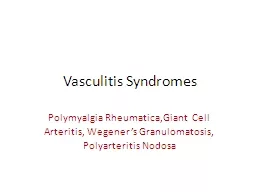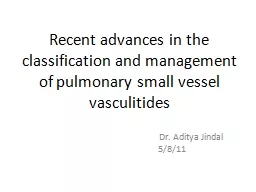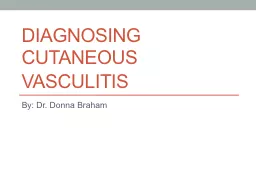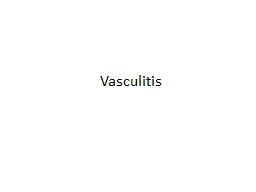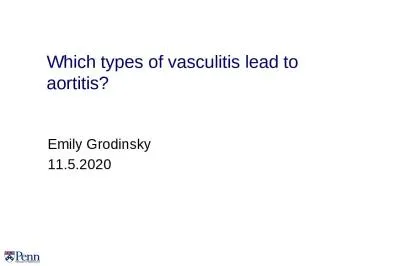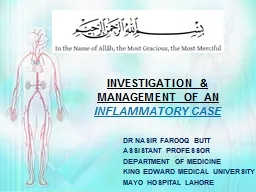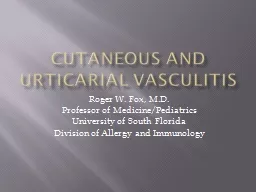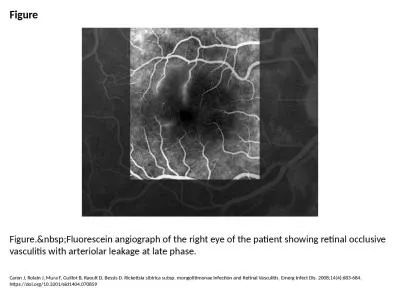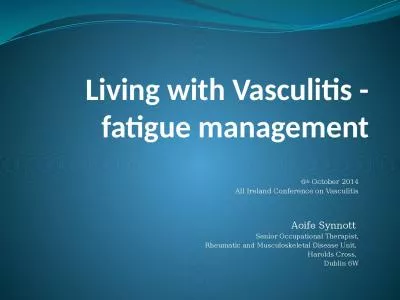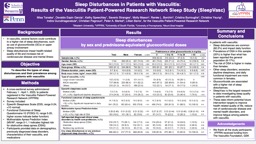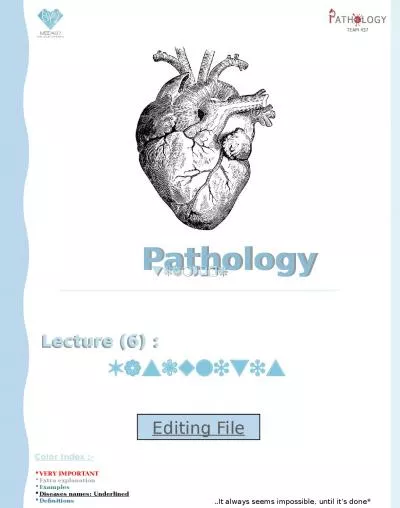PPT-Vasculitis Syndromes Polymyalgia
Author : liane-varnes | Published Date : 2020-04-04
RheumaticaGiant Cell Arteritis Wegeners Granulomatosis Polyarteritis Nodosa What is Vasculitis Disease characterized by inflammation of blood vessel walls
Presentation Embed Code
Download Presentation
Download Presentation The PPT/PDF document " Vasculitis Syndromes Polymyalgia" is the property of its rightful owner. Permission is granted to download and print the materials on this website for personal, non-commercial use only, and to display it on your personal computer provided you do not modify the materials and that you retain all copyright notices contained in the materials. By downloading content from our website, you accept the terms of this agreement.
Vasculitis Syndromes Polymyalgia: Transcript
Download Rules Of Document
" Vasculitis Syndromes Polymyalgia"The content belongs to its owner. You may download and print it for personal use, without modification, and keep all copyright notices. By downloading, you agree to these terms.
Related Documents

